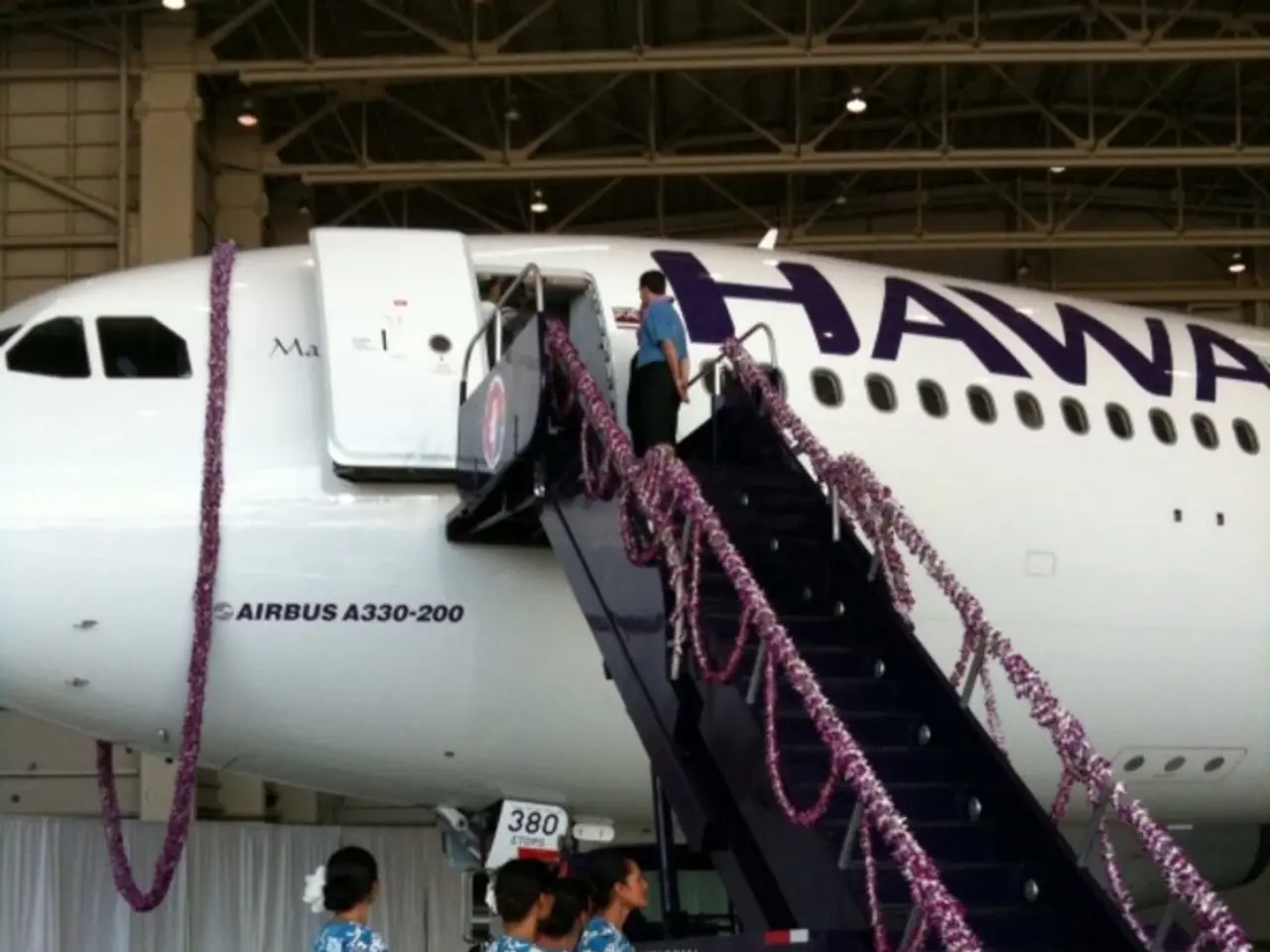Instructions for Setting Minimum Visual Flight Altitudes
In the skies above us, there are regulations in place to ensure the safety of everyone on the ground. One such regulation, covered by the Federal Aviation Administration (FAA) in 14 CFR 91.119, outlines minimum safe altitudes for aircraft flying.
When flying over congested areas, like cities or towns, the FAA requires a minimum altitude of 1,000 feet above the highest obstacle within a horizontal radius of 2,000 feet of the aircraft. These congested areas are not explicitly defined by the FAA, but they are typically urban or densely populated areas.
In contrast, over non-congested areas, the minimum altitude is 500 feet above the surface. However, aircraft must maintain at least 500 feet horizontal distance from any person, vessel, vehicle, or structure, especially over open water or sparsely populated areas.
The FAA's regulations also include a general provision that anywhere else, the altitude must allow for an emergency landing without undue hazard to persons or property on the surface if a power unit fails. This provision is crucial, as catastrophic failures at low altitudes leave little room (or time) to react safely.
Sectional charts, used for visual flight rules (VFR) navigation, provide details about the terrain and obstacles that aircraft might encounter. Obstacles that extend more than 200 feet above ground level (AGL) are typically shown on these charts, unless they are within the yellow tint of a city. The charts use colour tints to show bands of elevation, starting at sea level. The colors are designed to mimic the general color of terrain, with green at sea level and dark brown at higher elevations.
Symbols on sectional charts indicate obstacles. Obstacles that are less than 1000' AGL are marked with a small symbol, and obstacles 1000' AGL and higher are marked with a larger symbol. The Maximum Elevation Figure (MEF) identifies the highest elevation within a quadrant on a chart, marked by a small black dot with a number next to it.
It's important to note that these minimum safe altitudes do not apply when necessary for takeoff or landing. Pilots should always be thinking of an emergency landing point when they're flying, especially over dense urban areas. Signing up for the VFR Charts and Publications online course can help pilots learn more about reading and understanding sectional charts.
Lastly, the FAA takes a conservative viewpoint on what constitutes a congested area. The rule of thumb is that no person may operate an aircraft in a careless or reckless manner so as to endanger the life or property of another. Breaking this rule, especially flying over an area that is not considered "congested," can result in enforcement actions by the FAA.
In summary, minimum safe altitudes are tailored primarily to ensure safety over populated or congested areas by requiring higher clearance, while allowing lower minimum altitudes over less populated or open areas but maintaining safe horizontal distances to people and objects on the ground or water. Pilots are encouraged to always consider emergency landing points and to fly responsibly to ensure the safety of everyone.
- The Federal Aviation Administration (FAA) outlines minimum safe altitudes for aircraft flying, including a higher clearance over congested areas like cities or towns at 1,000 feet above the highest obstacle within a 2,000-foot radius.
- Sectional charts, used for visual flight rules (VFR) navigation, provide details about the terrain and obstacles that aircraft might encounter, showing obstacles that extend more than 200 feet above ground level (AGL) to help pilots maintain safe altitudes.
- Pilots should always consider an emergency landing point when they're flying, especially over dense urban areas, as catastrophic failures at low altitudes leave little room or time to react safely.
- Minimum safe altitudes do not apply when necessary for takeoff or landing, so pilots must always be thinking of a suitable emergency landing spot.
- Signing up for the VFR Charts and Publications online course can help pilots learn more about reading and understanding sectional charts, which use color tints to show bands of elevation and symbols to indicate obstacles.
- The FAA's regulations require a minimum altitude of 500 feet above the surface over non-congested areas, but aircraft must maintain at least 500 feet horizontal distance from any person, vessel, vehicle, or structure.
- The FAA takes a conservative viewpoint on what constitutes a congested area, with the rule of thumb being no person may operate an aircraft in a careless or reckless manner so as to endanger the life or property of another, especially flying over an area not considered "congested."
- Over open water or sparsely populated areas, aircraft must maintain a minimum altitude of 500 feet above the surface, with a minimum clearance of 500 feet horizontally from any person, vessel, vehicle, or structure to ensure safety.
- In summary, minimum safe altitudes are tailored to ensure safety over populated or congested areas by requiring higher clearance while allowing lower minimum altitudes over less populated or open areas but maintaining safe horizontal distances to people and objects on the ground or water.
- Breaking the rule of flying carelessly or recklessly in any area, including non-congested regions, can result in enforcement actions by the FAA, emphasizing the importance of adhering to FAA regulations and maintaining responsible flying habits within the aerospace, transportation, and finance operations of the aviation industry.








